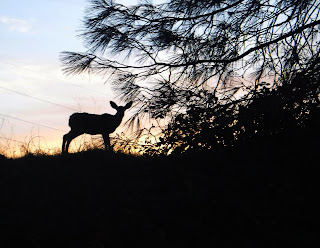The life of the wood, meadow, and lake go on without us. Flowers bloom, set seed and die back; squirrels hide nuts in the fall and scold all year long; bobcats track the snowy lake in winter; deer browse the willow shoots in spring. Humans are but intruders who have presumed the right to be observers, and who, out of observation, find understanding. -- Ann Zwinger
There are two factors that are relied on when getting images of wildlife. The first is patience. Getting up close to wild animals with an elusive nature proves to be challenging. You can’t ask them to look this way or stand where the light is better. Be prepared to wait and watch for that perfect moment. As a consequence, the longer you spend watching them the more you to know about them.
“You have to be really patient,” National Geographic photographer Joel Sartore told PBS, “ Most shoots I’m covered with bugs. Most of the time it's physically miserable, and if you weren’t wound tight like me to get good pictures, why in the world would you ever do something like this? I don’t think you could stand it!”
Over last decade Sartore focus has been a project he calls the Photo Ark, the world’s largest collection of animal studio portraits. His goal is simple: to get the public to care and save species from extinction.
"That’s what the Photo Ark really is about,” Sartore said about the series. “It's hoped that people will fall in love with these things, want to learn about what happened to the species, what they can do to save it and then realize that it ties directly back into their own lives. I think we should show good stewardship to all species, great and small. Clearly, the best course of action is to protect entire ecosystems so that individual species don’t get into trouble in the first place."
I don't claim to be a wildlife photographer. Sometimes it's just luck. Getting up close to skittish wild animals in nature can be both challenging and immensely frustrating, especially when relying on waterproof point and shoot camera. However being able to glide silently through the water in a kayak I'm able to observe and shoot images from without disrupting them in their natural habitat. Sometimes I find the animal is just as curious about me as I am them.
That was the case while on a recent paddling trip on Lake Clementine. The lake is a four-mile-long and narrow waterway in Northern California's Auburn State Recreation Area, fed by the North Fork American River. It was formed in 1939 when the Army Corps of Engineers built the dam to prevent gold mining debris from flowing downstream.
Paddling around the bend near the upper portion of the lake, I happened upon a bobcat on the high back eyeing a pair of geese in the water below. As I came closer, its attention drifted towards me and my boat.
Seldom seen, these elusive and nocturnal wildcats roam throughout much of North America and adapt well to such diverse habitats. Stealthy solitary hunters, they survive on diet of rabbits and ground squirrels by using their long legs, large paws to pounce on their prey. Named for its tail, which appears to be cut or “bobbed.”
An important character in Native American folklore claims the bobcat doesn't show itself without reason. Traditional stories say the sighting of a bobcat is very powerful medicine. The bobcat plays a very negative role in the legends of some tribes. It is considered bad luck to see a one. He is greedy, selfish, and disregards social rules, while others believe dreaming about strong and agile animal would grant them special powers and superior hunting skills. Often parabled opposite of the coyote, the bobcat is associated with the fog because of its hidden and secretive nature while the coyote represents natural forces the wind.
Interpretations of bobcats sightings vary. For many that are not tuned in spiritually, seeing the animal is a thing of chance. Of course, I don't think that. When I'm out on the water the mysterious properties nature and theology always immerses me. So maybe it wasn't luck, the bobcat was not a coincidence but a lesson received in silence.
It's a sign to reflect and regain our energy. As a solitary creature, the bobcat inherently knows this and is trying to tell us to break away and take time for ourselves. To seek quiet moments to ask ourselves some meaningful questions and think about what matters most. In our noisy lives filled with people, things and media, we all need an escape and chance to seek our own solitude.
After a while, the bobcat's patience with our face to face encounter fades. It decides to move to higher ground and into the shelter of the Ponderosa pine looking back over its shoulder from time to time, watching me before disappearing like the fog into the cover of the hills
Over the Bow is a feature from Outside Adventure to the Max, telling the story behind the image. If you have a great picture with a great story, we would love to see it. Submit it to us at nickayak@gmail.com

















